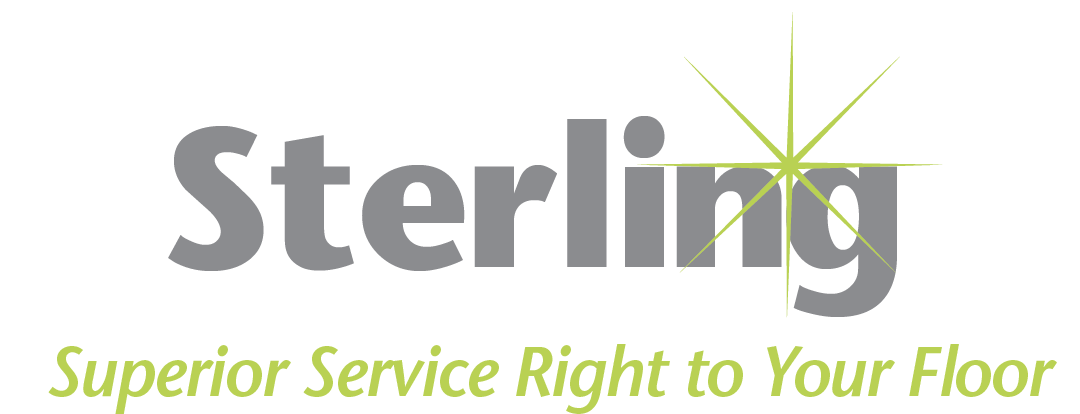The Surface Solutions | Enhancing Hospital Maintenance with Epoxy Flooring Solutions

At Sterling Services, we are always focused on staying ahead of industry trends and embracing innovations that benefit both our team and our clients. Hear from Darrell Gibbs, our regional manager in Dallas, Texas, about the exciting developments of epoxy flooring solutions.
Maintaining clean and hygienic environments in healthcare settings, especially in high-traffic areas like emergency room restrooms, can be a constant challenge. In this edition, we explore how one hospital addressed these challenges and improved both its maintenance efficiency and hygiene standards through an innovative flooring solution.
The Challenge: A Demanding Environment
Hospital emergency rooms, by nature, experience high volumes of foot traffic, particularly in the restrooms adjacent to these areas. These facilities are under constant pressure to remain clean, and the existing flooring, which featured grout lines, proved to be a significant hurdle. Grout lines tend to accumulate dirt, bacteria, and other contaminants, making it difficult to maintain high hygiene standards. This required frequent and intensive cleaning, which put strain on the hospital’s already limited maintenance staff.
Key Challenges:
- High Traffic: Restrooms experienced constant use, leading to rapid wear and buildup of contaminants in grout lines.
- Maintenance Constraints: Limited cleaning staff struggled to keep up with the rigorous cleaning demands necessary to meet hygiene standards.
The Solution: Epoxy Flooring
To resolve these ongoing issues, the hospital explored the benefits of epoxy flooring systems—an option that could offer a seamless, non-porous surface ideal for high-traffic healthcare environments. Epoxy flooring eliminates the need for grout lines, which not only simplifies the cleaning process but also reduces areas where dirt and bacteria can accumulate.
Key Benefits of Epoxy Flooring:
- Seamless Surface: The continuous surface of epoxy eliminates grout lines, making it easier to clean and maintain compared to traditional tile floors.
- Non-Porous Properties: Epoxy flooring does not absorb liquids, which helps maintain hygiene by preventing bacteria and contaminants from seeping into the floor.
- Compatibility with Modern Cleaning Tools: The smooth surface of epoxy is ideal for use with flat mops, which are more efficient and hygienic than traditional string mops.
The installation of the epoxy flooring was carried out efficiently, with minimal disruption to the hospital’s daily operations. By applying the epoxy directly over the prepared concrete substrate, the process was both quick and effective, eliminating the need for extensive subflooring or other time-consuming procedures.
Steps Taken:
- Seamless Installation: The epoxy was applied directly over the existing concrete, streamlining the process and reducing the time required for installation.
- Improved Cleaning Practices: The hospital’s maintenance staff were able to adopt flat mops, which allowed for more efficient and effective cleaning of the restroom areas.
The Outcomes: Improvements in Efficiency and Hygiene
Since the installation of the epoxy flooring, the hospital has experienced noticeable improvements in both its maintenance operations and overall hygiene standards.
Key Outcomes:
- Reduced Cleaning Frequency: The seamless and non-porous nature of the epoxy floor made it easier to maintain, reducing the need for frequent, intensive cleanings.
- Increased Staff Efficiency: With a more manageable cleaning process, staff were able to allocate time to other maintenance tasks, improving overall facility upkeep.
- Enhanced Hygiene: The hygienic benefits of the non-porous surface helped maintain a cleaner, safer environment, which is crucial in healthcare settings where patient safety is paramount.
Lessons Learned:
- Material Selection Matters: When selecting flooring materials for healthcare facilities, it’s essential to consider not only aesthetics but also the operational needs of the facility. Materials that reduce cleaning time and improve hygiene can significantly contribute to long-term efficiency.
- Training and Adaptation: Introducing new flooring systems requires proper staff training to ensure they can leverage the benefits of the new material. This includes understanding the best cleaning techniques to maximize the flooring's lifespan and hygiene performance.
- Proactive Facility Management: Addressing facility challenges before they become larger problems can lead to significant improvements in both operational efficiency and patient satisfaction. Regularly evaluating the effectiveness of existing materials and considering upgrades can make a tangible difference.
A Smart Investment for Healthcare Facilities
This case study demonstrates how thoughtful upgrades to flooring can address both operational challenges and hygiene concerns in high-demand healthcare environments. Choosing the right flooring solution is not just about aesthetics—it's about making a strategic investment in the facility’s long-term efficiency and cleanliness.
By understanding the unique needs of your healthcare facility and selecting materials that reduce maintenance efforts and improve hygiene, you can help create a more efficient, safer environment for both patients and staff
